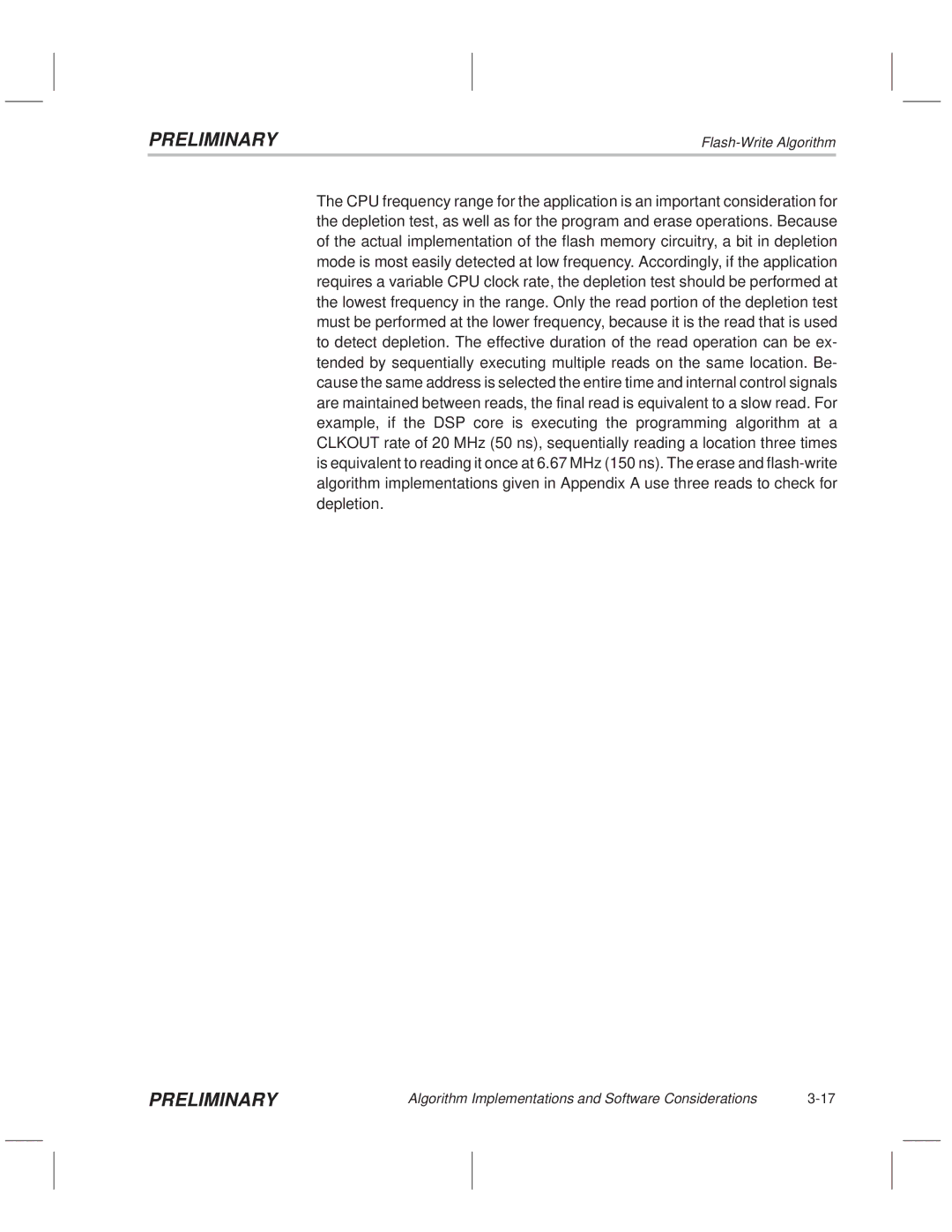
PRELIMINARY
The CPU frequency range for the application is an important consideration for the depletion test, as well as for the program and erase operations. Because of the actual implementation of the flash memory circuitry, a bit in depletion mode is most easily detected at low frequency. Accordingly, if the application requires a variable CPU clock rate, the depletion test should be performed at the lowest frequency in the range. Only the read portion of the depletion test must be performed at the lower frequency, because it is the read that is used to detect depletion. The effective duration of the read operation can be ex- tended by sequentially executing multiple reads on the same location. Be- cause the same address is selected the entire time and internal control signals are maintained between reads, the final read is equivalent to a slow read. For example, if the DSP core is executing the programming algorithm at a CLKOUT rate of 20 MHz (50 ns), sequentially reading a location three times is equivalent to reading it once at 6.67 MHz (150 ns). The erase and
PRELIMINARY | Algorithm Implementations and Software Considerations |
